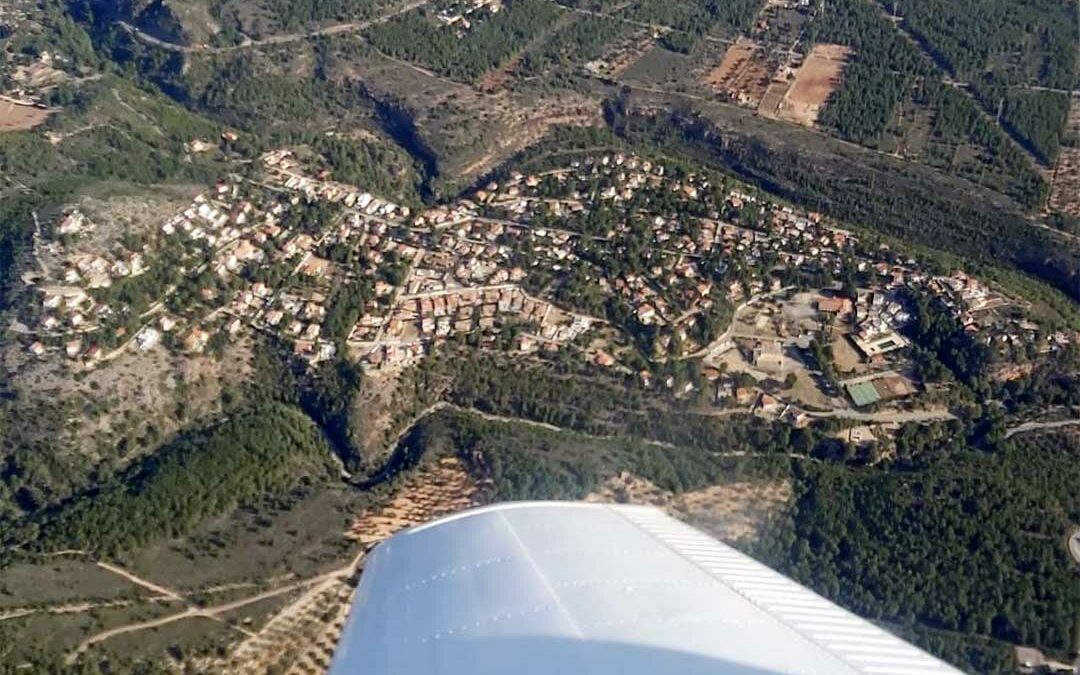Photo: HANS VAN GEFFEN
A widespread problem in Catalonia
The Catalan daily El Punt Avui published on 7 August 2025 an article entitled “Urbanitzacions de segona”, presenting a worrying situation: nearly 1,500 urbanisations are recorded in Catalonia, and almost half are still not regularised by their municipality. This lack of regularisation prevents or delays the provision of essential public services (water, lighting, roads, sanitation), despite residents paying their taxes.
The Diputació de Barcelona has identified 367 urbanisations with deficiencies across 118 municipalities. Since 2018, only about ten of them have been regularised and integrated into municipal networks. The figures speak for themselves:
- 83% have little or no basic services.
- 74% have no shops.
- 50% lack public facilities.
- 20% are located in non-developable areas (natural parks, etc.).
Planas del Rey: a typical… and aggravated case
Planas del Rey perfectly illustrates this structural problem, but with aggravating factors. Here, the former EUCC (Entitat Urbanística Col·laboradora de Conservació) was dissolved in 2016 after being declared illegal. Nevertheless, the municipality of Pratdip still refuses to provide minimum services, claiming that the urbanisation is not “integrated”.
This blockage is not only technical or financial: it is also political. For years, the town hall has relied on the absence of official reception to evade its obligations, despite legal provisions requiring these services in inhabited areas.
A new legal framework: Decree-law 2/2025
In force since 27 February 2025, the Catalan government’s Decree-law 2/2025 brings major changes:
- It now allows municipalities to provide minimum services even in non-developable areas.
- It authorises the implementation of autonomous solutions (such as collective septic tanks) when connection to a public network is impossible.
- It opens the door to progressive receptions of infrastructure, avoiding owners having to bear all the costs at once.
- It strengthens transparency by requiring municipalities to publish their urban planning in a register accessible to all.
In practical terms, for Planas del Rey, this means that there is no longer any serious legal basis for refusing minimum services. The problem is no longer proving the right: it is now forcing the town hall to apply the law.
What now?
This new legal framework opens up avenues for action:
- Demand the official publication of Planas del Rey’s urbanistic status.
- Request a progressive reception of infrastructure.
- Use case law and the provisions of the decree-law to support an administrative or legal appeal.
- Mobilise public opinion by stressing that Planas is not an isolated case but an emblematic example of a “second-class” urbanisation that the law now makes possible to regularise.
Conclusion
The El Punt Avui article reminds us that Planas del Rey is part of a problem affecting all of Catalonia. But with Decree-law 2/2025, the law has now shifted in favour of the residents: minimum services can and must be provided. The decisive step that remains is to enforce the law against a municipal blockade that no longer has any legal justification.
Vecinos de Planes del Rei Association (SOSPlanes)







